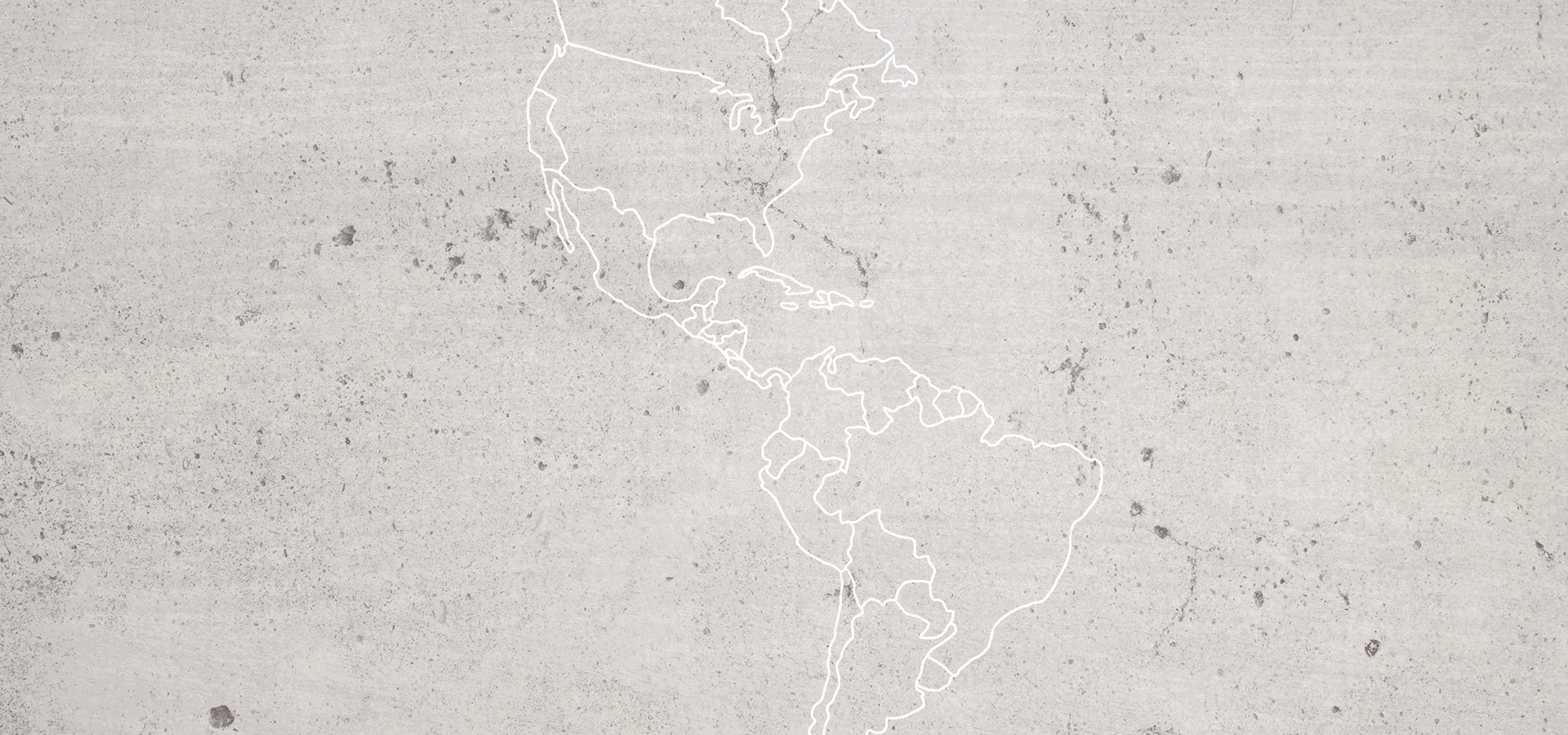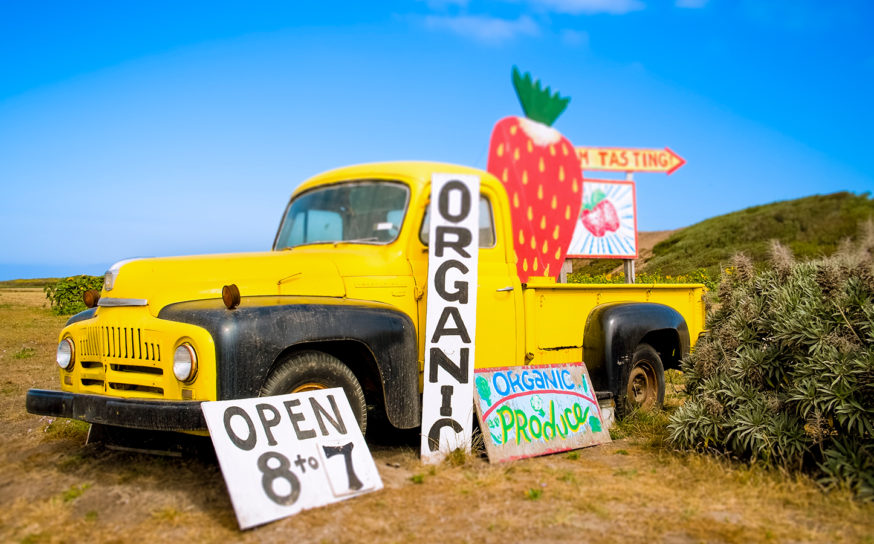Why in the Hell Would California Take on Colombia?
It’s new, scant and expensive, but some growers think cultivating coffee could be the Golden State’s next great crop.
-
CategoryFarm + Table, Makers + Entrepreneurs
-
Written ByBonnie Graves
-
Photographed ByShane O'Donnell
-
When a young André Tchelistcheff first came to Napa and was hired by Beaulieu Vineyards’ owner Georges de la Tour in 1938, precisely no one thought a wine industry was viable in California. While there was a rich history of Spanish-influenced sacramental winemaking in addition to an embarrassingly accommodating climate, fine wine in the Golden State remained a pipe dream until approximately 1965. That’s the year that another young man with European roots opened his eponymous winery—Robert Mondavi—in the Oakville District of Napa Valley.
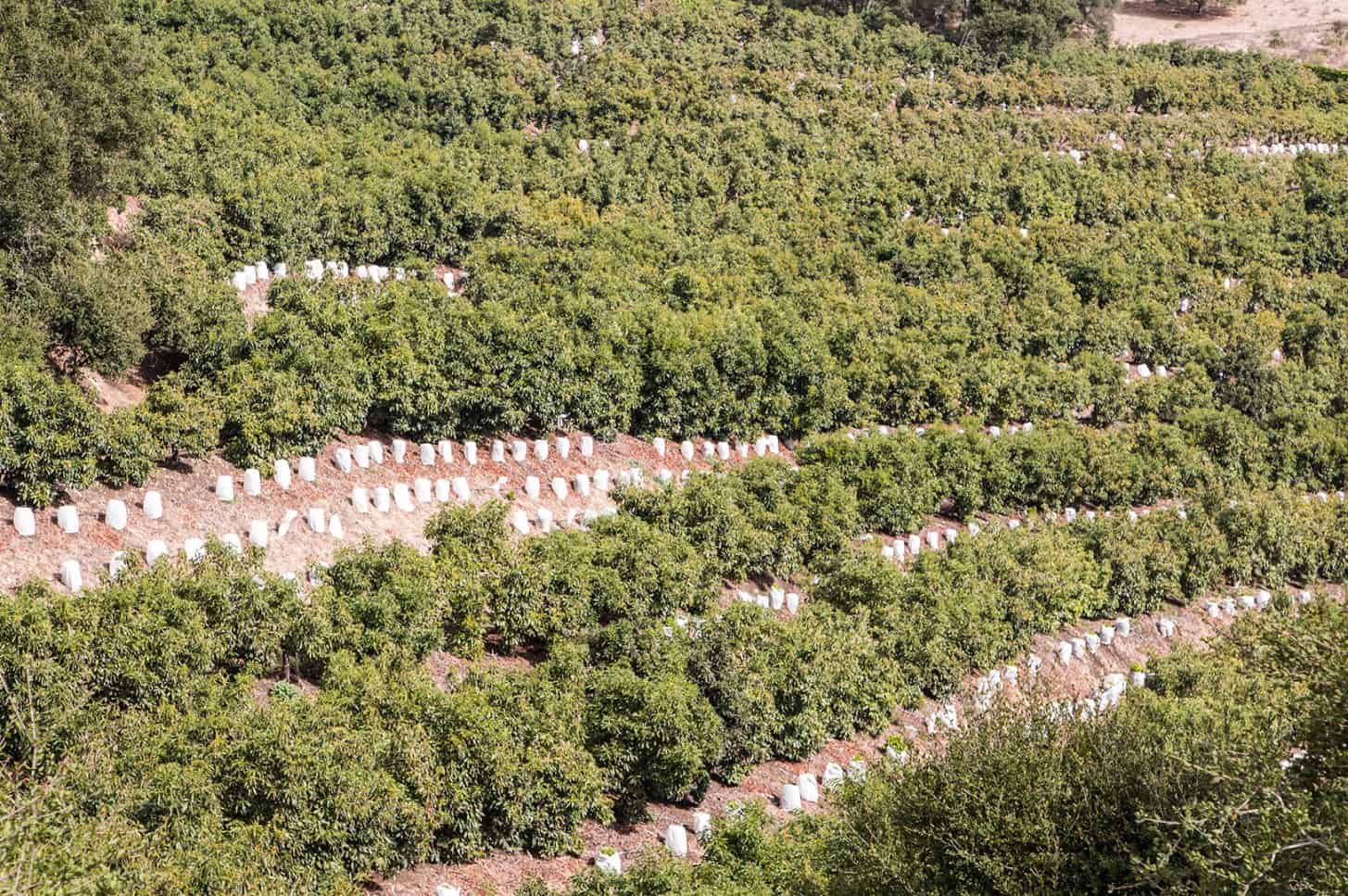
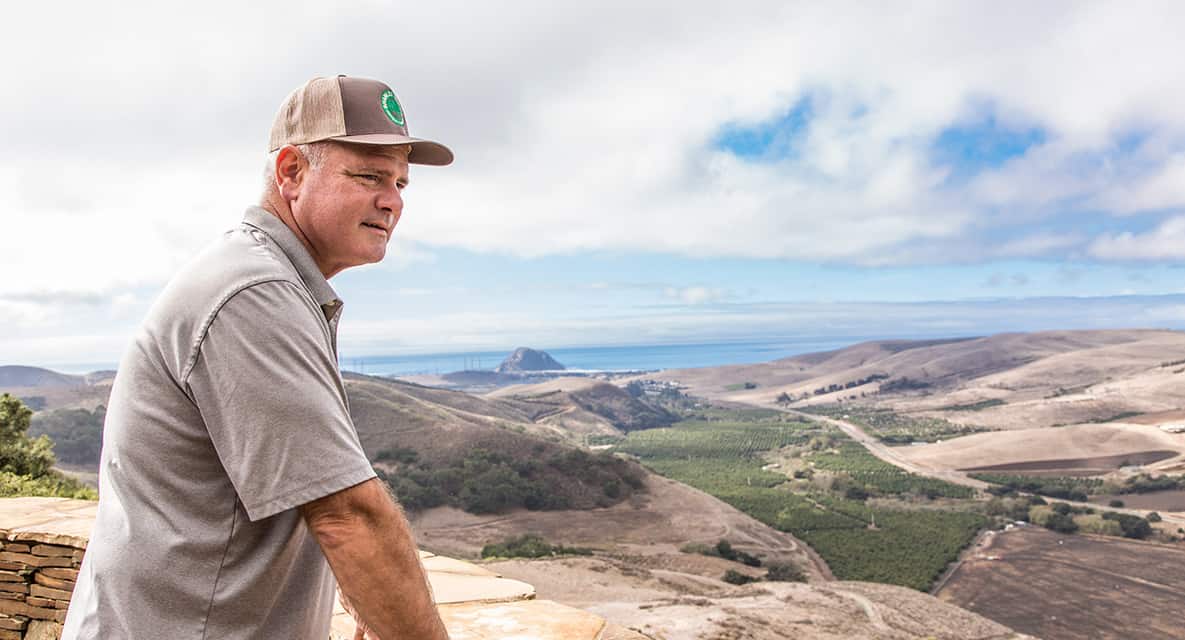
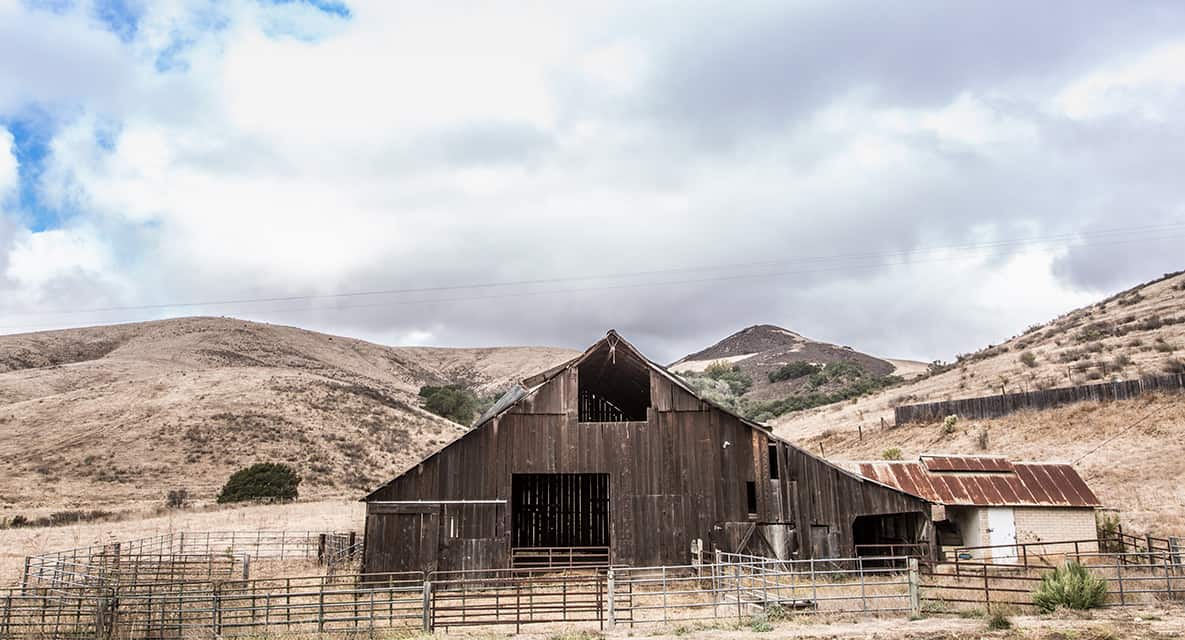
According to the Wine Institute, California’s largest trade organization, the wine industry here now generates a whopping $114 billion dollars in annual economic activity while employing 786,000 Americans across the U.S. California alone is the fourth largest producer of wine in the world. It’s difficult to overstate the astronomical success of the industry in just 50-odd years since Mondavi gambled on Napa’s climate and his own business acumen. Both bets proved prescient and profitable.
Today, a new generation of California farmers is rolling the agricultural dice and this time they’re eyeing the coffee market. The USDA’s annual report on international coffee production estimates an astonishing 159 million bags at 65 kilograms each for the current 2017/2018 crop. That’s a LOT of beans. More impressively, coffee is the world’s most profitable commodity after crude oil. It ranks ahead of commodities like natural gas, corn, sugar and even gold in terms of overall global value, with well over $100 billion in market share. It’s the fuel that fuels the world and, as Business Insider observes, “it’s more than popular, it’s ubiquitous.”

Fertile Ground
Much like Napa winegrowing needed some early evangelists, California coffee has its own modern pioneers who are championing this difficult and pricey product. And, like vitis vinifera vines that take four years to produce any viable grapes, coffee plants also typically require four years to produce berries. Coffee growers in California need to have patience, and they need to have the right microclimate. Fortunately, they have an example of both in the work of Jay Ruskey, owner of Good Land Organics and widely considered to be the “Godfather of California Coffee.”
Located in Goleta, just north of Santa Barbara, Good Land Organics is one of the first producers of commercial coffee in California, although one senses that the inclusion of coffee is as much anecdotal as intentional. Ruskey and his disciples practice organic farming in every sense of the word. In the literal sense, Good Land Organics eschews industrial chemicals, fertilizers and machine harvesting. In the less obvious sense, their crop choices seem organic themselves, as if the farming team simply waited to see what the land would organically suggest and support.
Cue the cherimoyas, passion fruit, dragon fruit and yes, caviar limes. One of Ruskey’s signature techniques is “layered agriculture,” in which multiple crops mutually support each other while being intergrown on the same acreage. In this model, aging avocado trees that no longer produce sufficient fruit can find new life in shading nascent coffee plants. A deer fence protecting cherimoya trees can become a trellis for passion fruit. It’s the antithesis of mono-agriculture, in which a grower specializes in a single product like citrus or avocado. If your vision of a farm or an orchard includes orderly rows, then farms like Good Land—which meanders along some very steep Santa Barbara hillsides in a deceptively riotous mass of plantings—may at first glance look more like an experiment. It is an experiment in many ways; with no mechanized harvesting here, the labor costs necessarily soar.
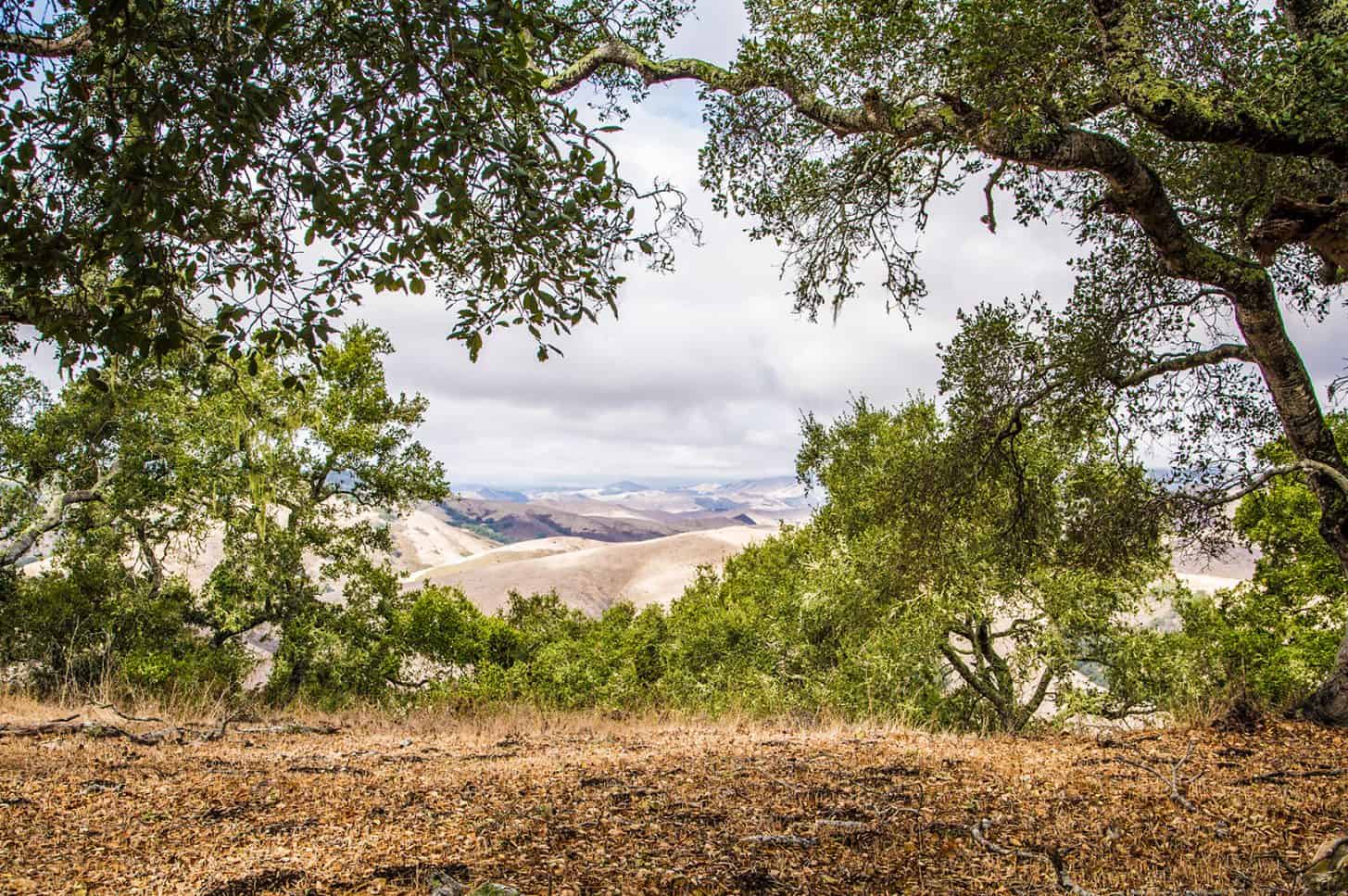
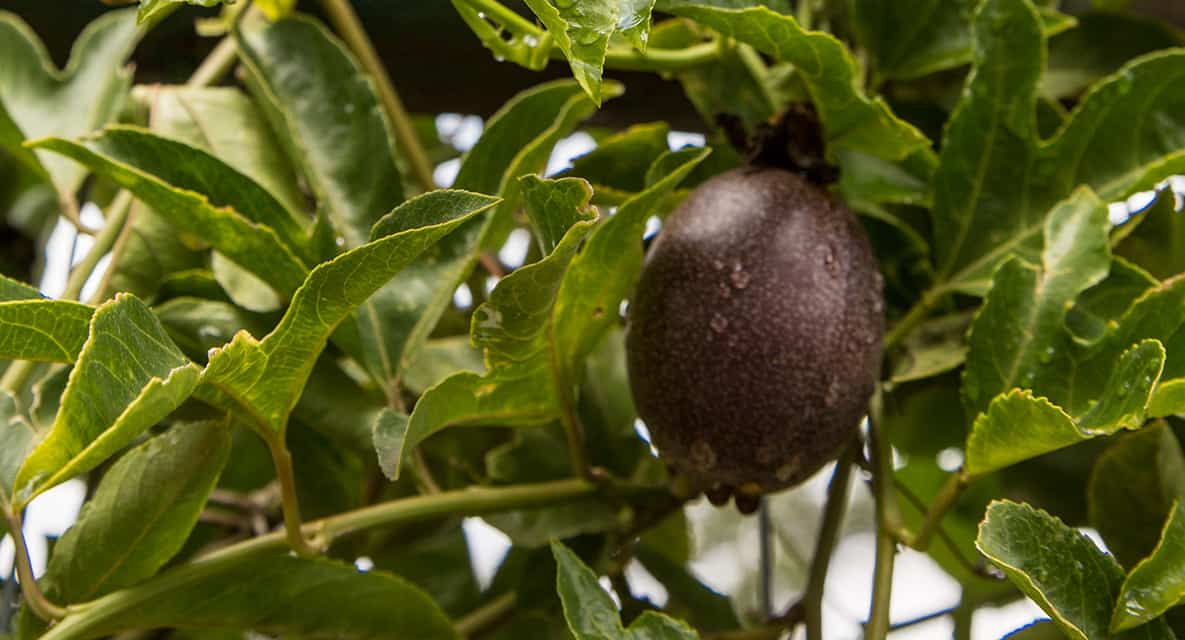
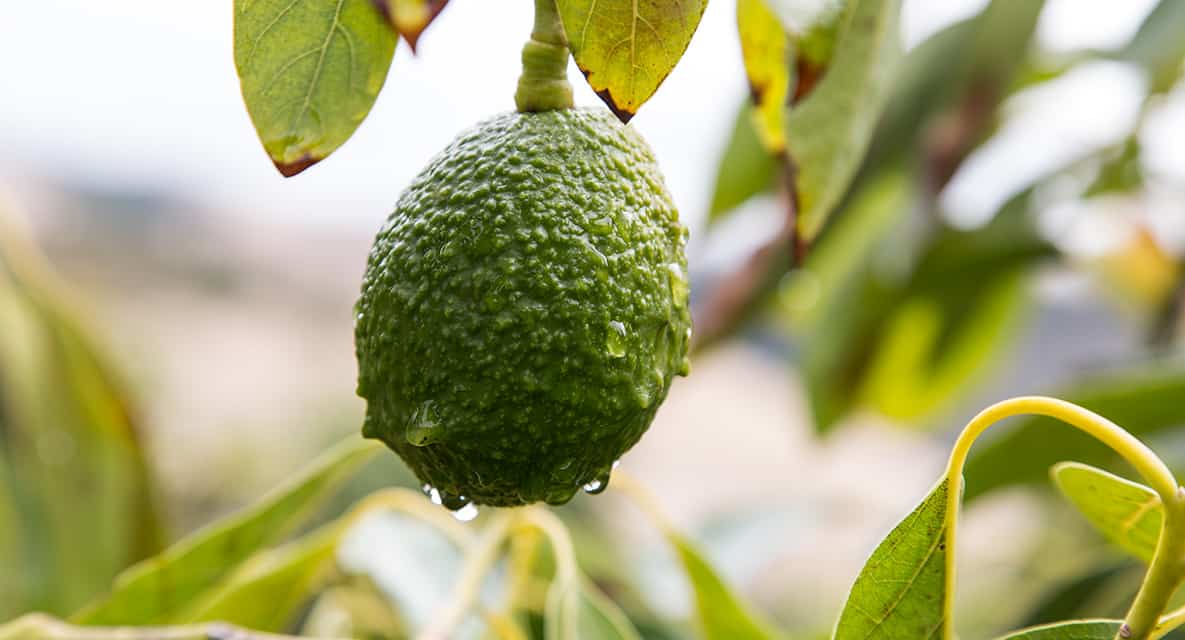
Cue the coffee. While some plants were put in over a decade ago, it’s only been in the last 4-5 years that consumer interest in California coffee has, well, perked up. While Arabica plants, the species that reigns for big producers like Colombia, are a great choice for the increasingly warm California climate, the cost involved in producing quality beans has rendered it more of a vanity crop to date, an obscure “supporting actor” who cost a lot for that cameo role.
Ruskey and other coffee growers, in partnership with Mark Gaskell of the University of California Cooperative Extension, aim to change that by participating in a collaborative growing trial of over a dozen different coffee varietals. It’s taking the time to see where and which Arabica strains thrive that will decide the industry’s domestic success, and the teamwork involved in this evaluation process is impressive. The rush to plant profitable chardonnay and cabernet sauvignon vines, for example (often in areas that were ill-suited for these grapes) created a somewhat monolithic wine industry until Santa Barbara came along and shook things Sideways with its championing of pinot noir. It’s a chicken and egg conundrum. What to plant? What will sell? With layered agriculture, the answer seems to be just about everything.

Jim Shanley runs Shanley Farms in Central California. While finger limes are the farm's main product, they have added coffee (along with avocados and passionfruit) to the mix.
The Cost of Caffeine
Jim Shanley, an affable commodities broker turned gentleman farmer, knows a thing or two about creating markets. Shanley and his daughter Megan run Shanley Farms, a breathtaking 40 acres of land above Morro Bay. (They also farm 62 acres in Visalia.) Jim’s main product is finger limes, a plant native to Australia that is quite extraordinary. Its fruit looks a bit like a shrunken cucumber or an overgrown cornichon, but when you break open its dull green exterior, an explosion of aromatic pearls erupts. It’s like no other citrus you’ve ever seen before, a market opportunity not lost on an entrepreneur like Shanley. He has gradually and steadily grown the wholesale market for this unique product, which can now be found in Whole Foods and in top-notch restaurants around the country. (To taste, the finger lime pearls or “caviar” have a sharp, high-toned citrus note that pairs beautifully with sushi, scallops and oysters, or in cocktail recipes.)
Shanley makes the comparison to pomegranates, which POM transformed from a fruit once considered rare outside of religious circles to an everyday, antioxidant “must-have” on American grocery shelves. He also points out the emergent market for goji berries, another “exotic” that has now become mainstream in a remarkably short period of time. It’s expensive to import gojis from the Himalayas, so someone’s got to figure out how to grow them in the U.S. Shanley observes that the modern boutique farmer is “more about creating food experiences than actually feeding people.” His customers have the discretionary income to buy both exotic fruits and fancy coffees, particularly when they are marketed effectively to new audiences. Daughter Megan, a Cornell grad in economics, runs the Sales & Marketing for Shanley and her expertise here is crucial.
If you can grow an equatorial product well and well north of the equator, then it’s going to eventually be too hot at the center.
Shanley grows avocados and coffee too, and his championing of the latter may prove to be his smartest move yet. Some years back, Shanley helped plant the coffee nursery that has propagated plants for Ruskey and other growers around the state. It’s a commonality of plant origin that may prove to be critical as farmers evaluate the success of various coffee types in specific microclimates. At Shanley Farms, a row of majestic oaks perches high on a ridge in the background, framing a row of older, under-performing avocado trees that in turn scaffold passion fruit vines, an act of symbiosis that throws shade on the coffee plants thriving in the foreground. In reference to the older avocado trees, Shanley notes that “sometimes you can get more revenue from your crappy tree than from your nice tree,” a nod to the high price that both exotic fruits and premium coffee beans command on the open market. Avocados are cheap in comparison.
And California coffee is crazy-expensive. It’s also extraordinarily scarce, a problem that may be a blessing in disguise, at least for now. In terms of production, California so far only produces several hundred pounds of green coffee beans annually. Hawaii, our only domestic competitor, has about 800 coffee growers concentrated in the Kona district and their collective production is about nine million pounds. But compare the arable land mass of California to the Big Island, and you get a sense of the scope of the opportunity here in California. Perhaps this is what Mondavi once sensed as he assessed Napa’s unplanted slopes and promising soils.
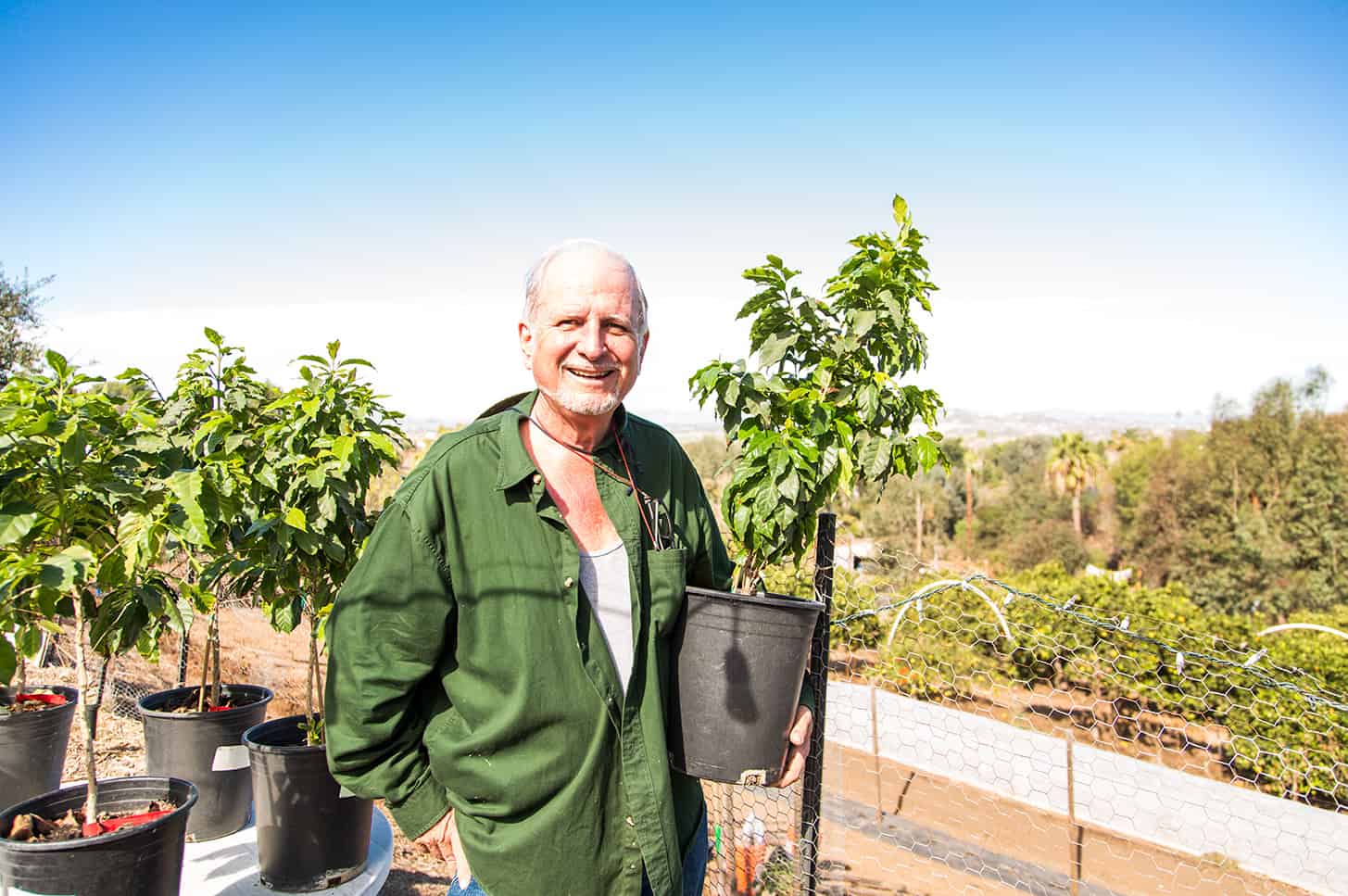
Scott Murray's Edge of Urban is a family-run educational farm and coffee plantation that boasts 2,200 coffee plants that are on-track for harvest in year three.
Top Shelf Beans
Scott Murray runs a family-owned “educational” farm and coffee plantation called Edge of Urban in north San Diego county; its name is apt as it sits adjacent to a major SoCal megalopolis, seemingly proof that you can grow coffee just about anywhere if you’re smart about it. Murray and his tribe’s stated goal is to be “a teaching farm where we aim to teach about conserving and growing based on where you live, being sustainable and being creative with small spaces.”
In this spirit of creative opportunity, Murray has put in 2,200 coffee plants on four dense acres of avocados and other trees. He is already on-track to harvest coffee beans in Year Three, an early and inspiring success that he directly traces to the organic, intercropping techniques that his colleagues to the north, Ruskey and Shanley, also use. If there’s a future for the ailing avocado industry in California, which has suffered from poor land use and increased Mexican competition, it may well be coffee.
Murray began his coffee plantation experiment by asking “Where will this product end?” Some early market research led him to believe that California coffee could compete in the so-called “ultra-premium” segment where a single cup of artisanal joe might fetch as much as $12/cup. Sound too pricey for your daily coffee habit? Connoisseurs in Asian markets, particularly in China and Japan, have paid as much as $120/pound and up for similarly “rare” coffees. Mass marketers like Starbucks are also trying to corral this consumer, as the Seattle behemoth plans to open 1,000 new outlets of its Reserve specialty stores. Here, discerning Starbucks drinkers can pay for flights of rare, single-origin brews prepared with all kinds of fancy techniques. Prices easily reach into the super-premium category. And absolutely no one monetizes coffee trends quite as effectively as Starbucks right now, although its recent dismantling of its evening wine program proved a rare misstep. Apparently, coffee and wine aren’t always marketable to the same consumer.

For his part, Murray projects $24/pound for his cost of production. His goal is to “achieve Kona quality while avoiding the Two-Buck-Chuck problem.” Due to lax Hawaiian labeling laws, only 10% of Kona coffee in fact comes from Kona, much like there’s no actual vintner named Charles Shaw laboring away in an imaginary vineyard. The goal is to grow super-premium coffee but not too much of it, such that there is a corollary flattening of price. It’s a difficult balancing act of supply and demand but it’s also a problem that won’t need to be addressed until more coffee growers have more substantive product to bring to the marketplace. Regardless, Murray is wise to be taking advance lessons from the wine industry’s playbook of successes and failures. Perhaps the days of Chock Full o’ Nuts and percolators will go the way of wine relics like “Hearty Burgundy” and jug “Chablis,” but for now California coffee remains an esoteric treat for the affluent.
That could change quickly, though, as climate change gradually raises the equatorial band northward. Coastal California offers the same diurnal shift to ripening coffee beans that it brings to our fine wine grapes—long, warm growing days tempered by cool maritime nights. This type of growing climate preserves acidity in all fruits, and in premium coffee berries and fine wine grapes, acidity is essential. Conversely, some traditional coffee-producing areas are experiencing the catastrophic effects of global warming. Drought has wreaked havoc in Brazil recently, where reduced coffee crop size and volatile pricing have forced long-time buyers like Starbucks to look to more stable regions like Costa Rica. Sumatra, Indonesia’s most important area for coffee production, has similarly suffered market loss. If you can grow an equatorial product well and well north of the equator, then it’s going to eventually be too hot at the center.
California’s climate change is a boon for coffee but it is perhaps also the harbinger of irreversible damage. A report from the UK’s Royal Botanic Gardens and the Environment/Coffee Forest Forum was widely circulated in 2012, in which it was claimed that almost 70% of the world’s coffee supply could disappear within the next 50-75 years. That is, until newer regions like California learn to grow it effectively and replace the supply now grown by others. This dire report may be the coffee equivalent of the movie Waterworld, but climate changes are perceptible and impactful in the coffee industry and that’s only going to intensify. When asked about climate change, Jim Shanley responds that, “the difference between weather and climate is hard to distinguish.” At Shanley Farms in Morro Bay, they receive an average of 22” of rain annually. With 2016’s wet and wild weather, they received 41.5”, which “did a lot of fixing to our past five years of drought.”
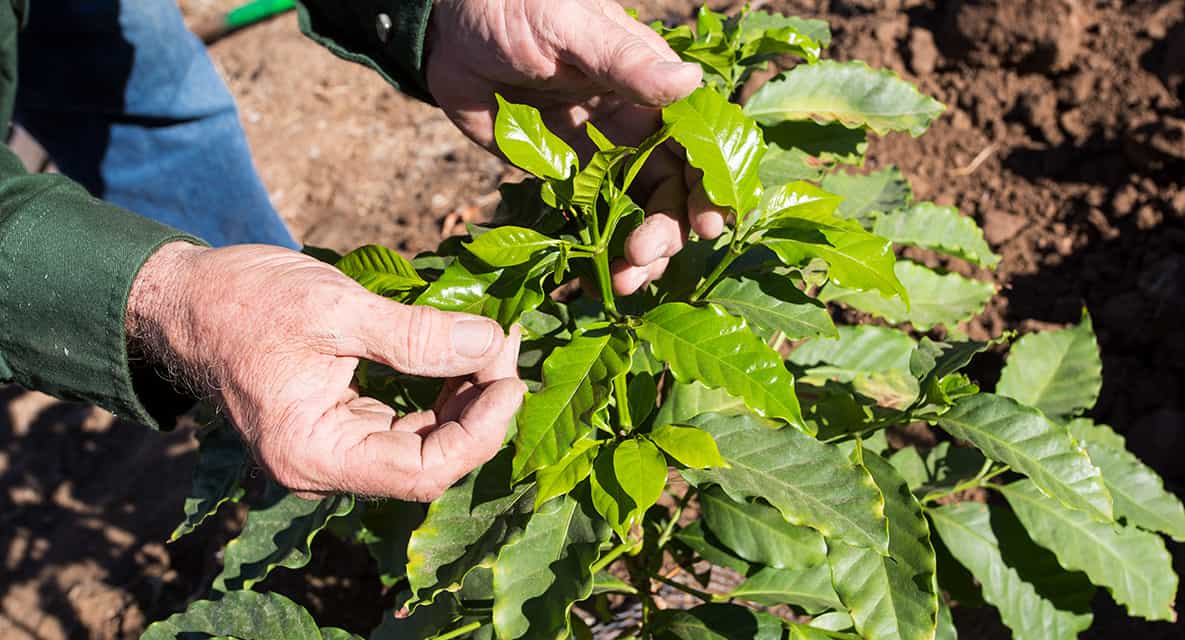
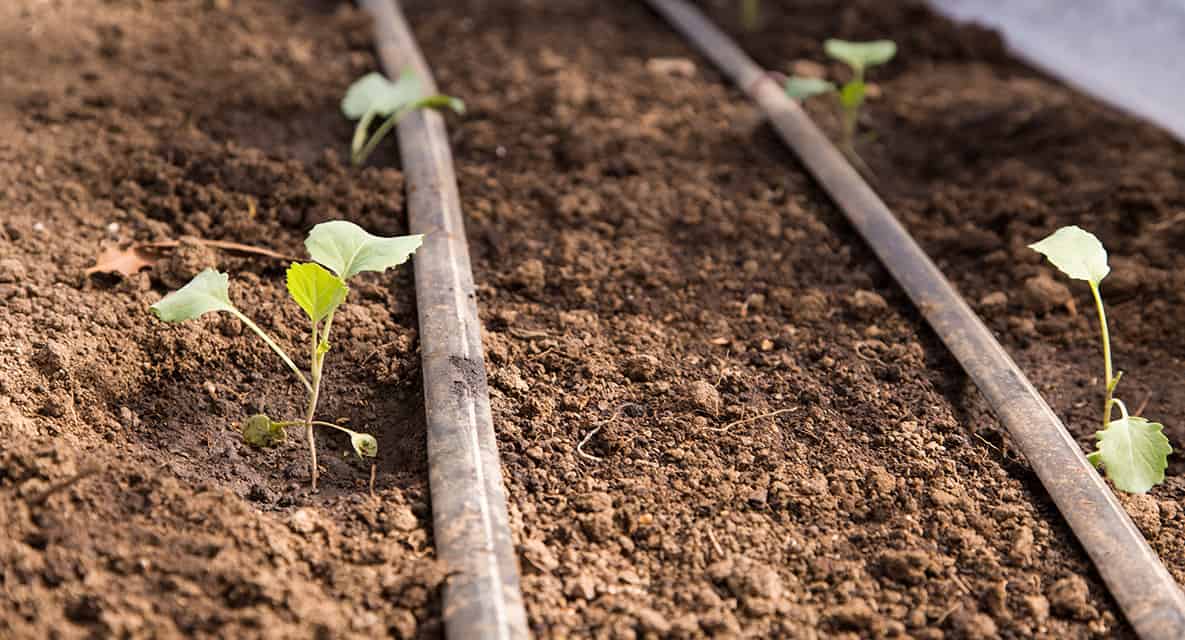

What’s the Buzz?
Despite the efforts of Mondavi and other pioneers, it was the famous “Judgment of Paris” blind tasting in 1976 that marked the arrival of California wine. When several upstart American wines were assessed ahead of their legendary and pricey French counterparts, the international industry was forced to sit up and take notice. Because it is a terroir-driven product like wine, coffee can also have surprising results when evaluated blindly.
Perhaps that day of reckoning is coming for California coffee, too. Recent international panels have scored Good Land Organics coffees well over 90 points and the market for such premium beans is only growing. Good Land’s website currently shows its 12-oz. bag of beans as “back-ordered,” even with a hefty price-tag of $65. Similarly, a recent request for a media tour was met with a 3-6 month wait-time. Perhaps most tellingly, California coffee now has a celebrity advocate as pop-star Jason Mraz has, with Scott Murray’s help, invested in a substantial coffee planting at his farm outside of San Diego. Mraz Family Farms coffees are not yet available but they’re likely to be very good when they come to fruition.
California coffee is challenging and costly to grow right now, but it is an incredibly promising venture for these intrepid farmer-entrepreneurs. As veteran organic grower Murray puts it, after his 40+ years in the business: “The only good news about being a farmer is that absolutely everyone is a customer.” And as most of these customers also drink coffee, our second most beloved global fuel has a very bright future right here in the Golden State.
Meet the Central Coast Waterman Who Thinks You Need More Seaweed in Your Life
Get to know one the world’s only natural sources of umami.
Best California Farms to Pick Your Own Strawberries This Season
Red, sweet and ready for picking!
Get the Latest Stories




